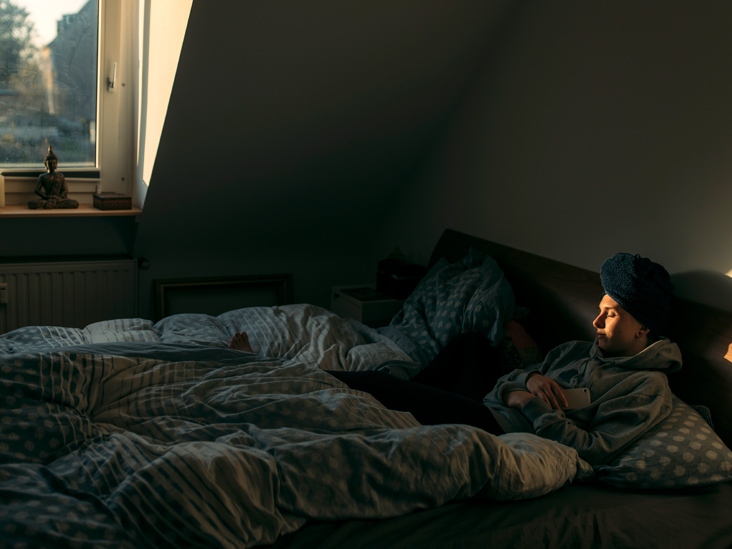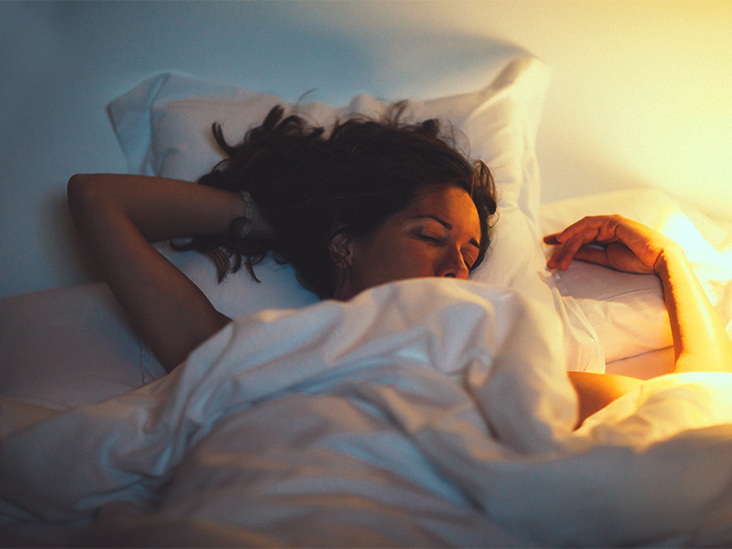Rest in a quiet, dark room
One of the most common migraine symptoms is sensitivity to light and sound. The discomfort caused by light may be linked back to a type of light-sensing cells in the eye called intrinsically photosensitive retinal ganglion cells (ipRGCs), which help maintain sleep-wake cycles and pupil response to light, according to a study published in Nature Neuroscience. These cells converge on pain-transmitting brain cells in rats. The ipRGC cells and the pain-transmitting cells are activated by light, and the cells remain activated for several minutes. That process, according to the researchers, might explain why headache pain worsens in the light and improves 20 to 30 minutes after being in the dark.
Go to a room that’s dark and quiet, and you may be able to sleep. This can help you find pain relief as well as reduce tension. Lay down and concentrate on your breathing. Using your diaphragm, take slow, deep breaths. Feel your stomach rise and fall with each inhale and exhale. This might help you in unwinding.












